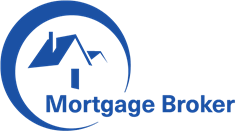What Is a Mortgage?

The mortgage term comes from the Law French term used in Britain during the Middle Ages. It meant “death pledge.” It is a contractual arrangement where a borrower gives up the property they are purchasing as collateral for a loan. Today, mortgages are used worldwide, although some characteristics may be regulated in a particular country. For instance, the interest rate on a mortgage may be fixed for the entire term of the loan, or it may vary. Mortgages may have a maximum length, and some have negative amortization.
Although the mortgage industry in the United Kingdom was traditionally dominated by building societies, their share has fallen from nearly ninety percent in the 1970s to just six percent today. As a result, more than two hundred financial companies supply mortgage loans to house buyers in Britain. These include banks, building societies, specialized mortgage corporations, insurance companies, and pension funds. This makes mortgages a viable option for many British consumers. Regardless of your reason for needing a mortgage, there are many different types of mortgage.
In addition to interest rates, mortgage lenders also require a down payment. The amount of down payment varies from lender to lender, but is usually expressed as a percentage of the property’s value. This ratio is called the loan to value ratio, and it is the amount of the loan divided by the property’s appraised value. A down payment of twenty percent, for example, has a loan to value ratio of eighty percent. The lender’s risk will be reflected in the interest rate the mortgage lender charges.
A mortgage payment typically consists of principal, interest, taxes, insurance, and escrow fees. The principal portion of the mortgage payment pays down the outstanding loan balance. The interest portion, meanwhile, is the cost of borrowing money. This is usually charged monthly, and is calculated on a percentage of the loan amount. Sometimes, a homeowner’s insurance payment is included in the mortgage payment. If you don’t put enough money down, you may want to consider getting mortgage insurance.
The interest rate on a mortgage is usually quoted with an annual percentage rate (APR). The APR is the cost of borrowing money from the lender. The loan’s total cost is the interest rate plus any fees that might be associated with it. The annual percentage rate is the best number to use to compare quotes. Keep in mind that some lenders may offer a lower interest rate than another, but the fees are usually higher. In this case, you’ll have to negotiate an extension or accept the current market rate.
Before applying for a mortgage, find out what your lender’s guidelines are. Different lenders have different timelines for locking in rates. The loan estimate you receive from each lender should contain the interest rate, type of loan, and points you’ll pay toward the loan. Make sure to read and understand all the information on the loan estimate to determine if it is a good deal. If you do end up selecting a mortgage lender, ensure that the lender offers its own loan app.
